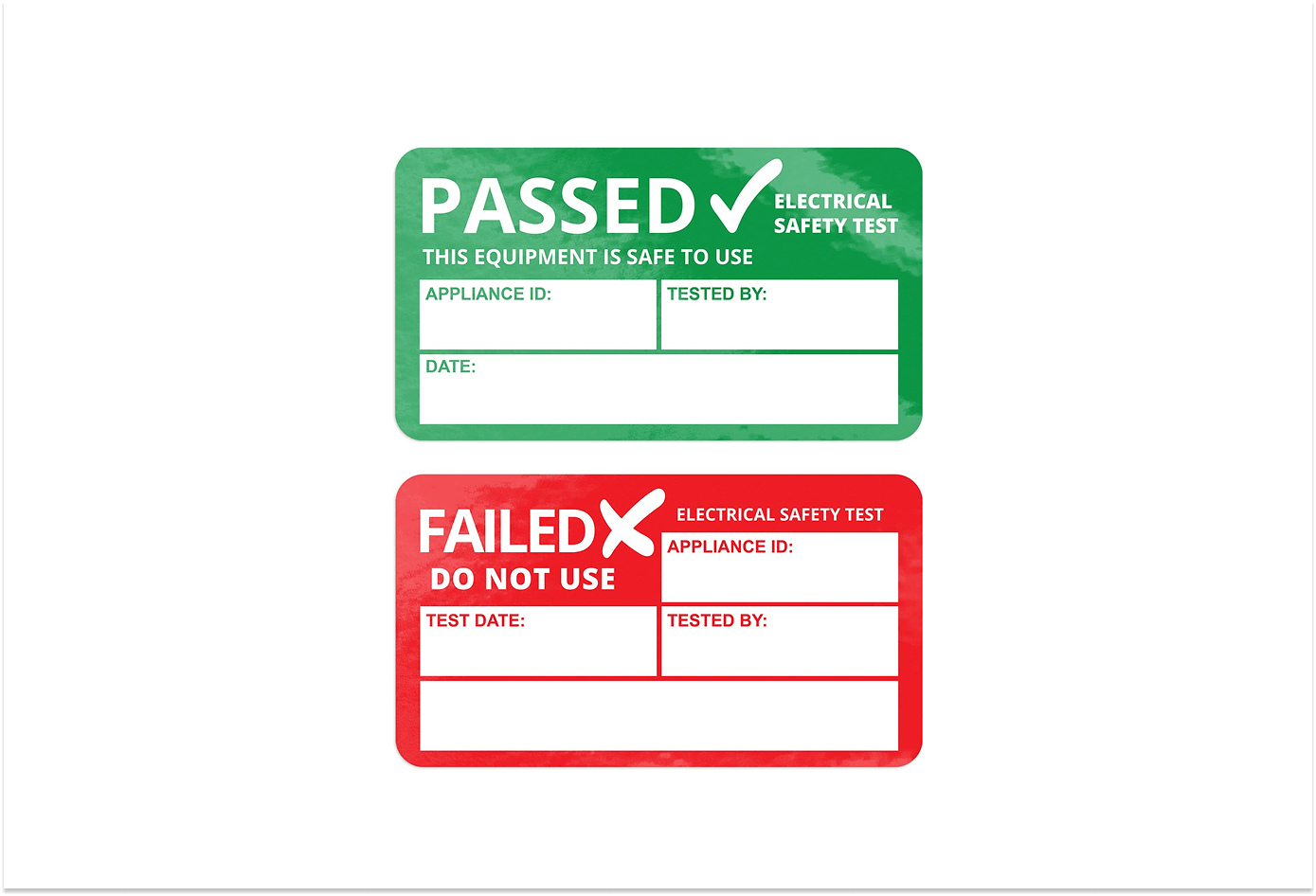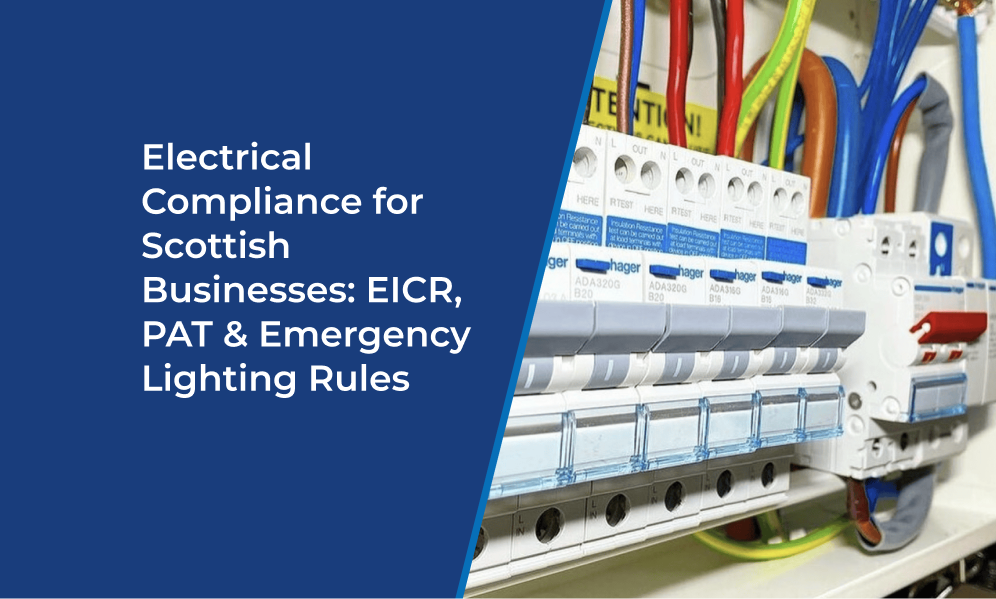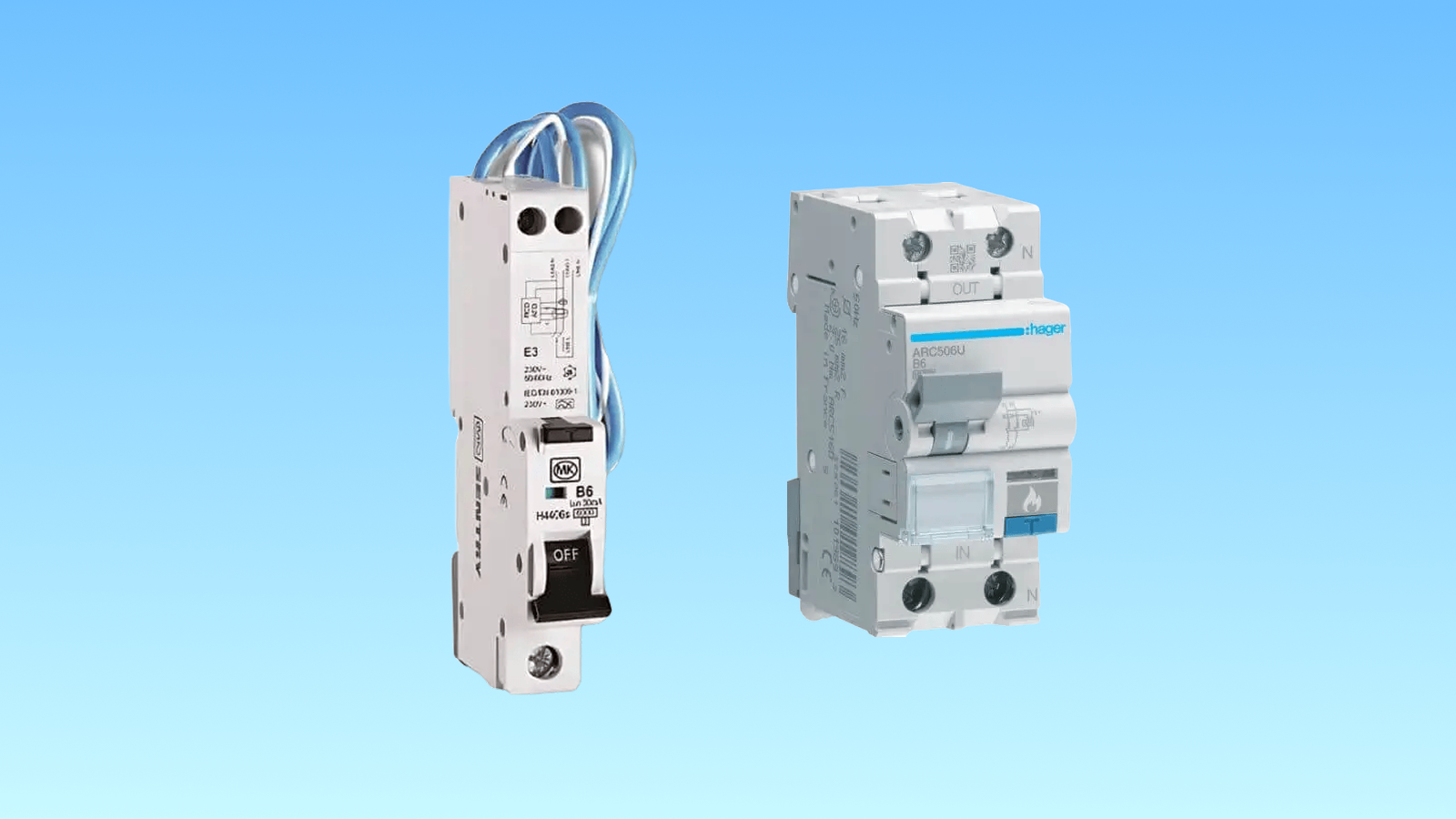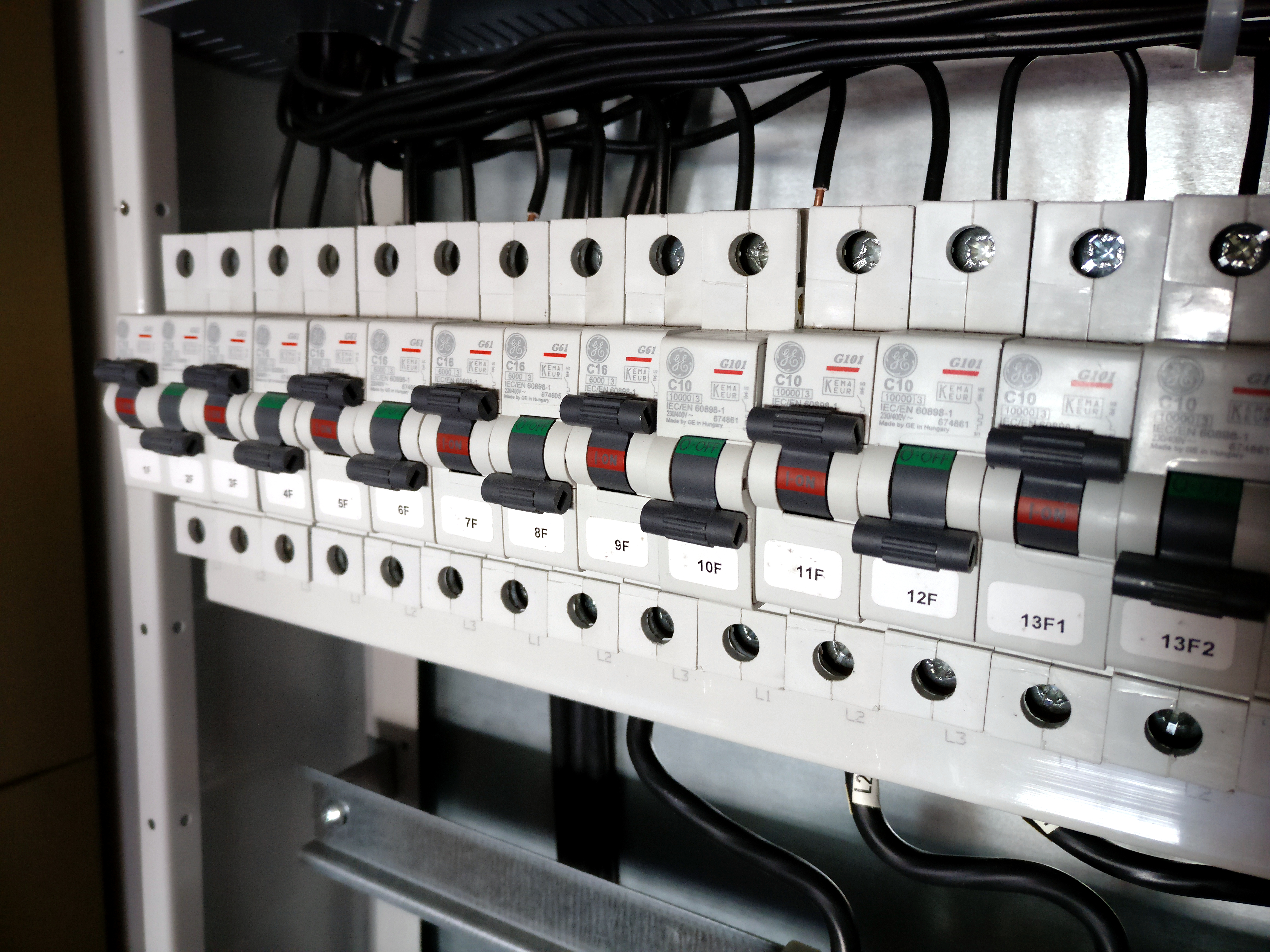The Landlord’s Guide to Electrical Safety in Scotland
Everything Scottish landlords need to know about EICRs, PAT testing, RCDs, and staying compliant with the Housing (Scotland) Act 2006.

The Landlord’s Guide to Electrical Safety in Scotland
If you’re a landlord in Scotland, you’ll know there’s a lot to keep on top of — from finding the right tenants to fixing that leaky tap in the kitchen. But there’s one responsibility that should never slip down the to‑do list: making sure your property’s electrics are safe.
This isn’t just about avoiding a fine (although the law is very clear on this). It’s about protecting the people who live in your property, and protecting yourself from the stress, cost, and potential tragedy that can come from electrical faults.
Since December 2015, the Housing (Scotland) Act 2006 and the Repairing Standard have set out exactly what’s expected of landlords when it comes to electrical safety. And while the official guidance might sound a bit dry, the steps you need to take are actually pretty straightforward.
Quick Safety Summary for Landlords
1. Your Property’s MOT: The EICR
At least every five years, your property needs an Electrical Installation Condition Report (EICR). Think of it as an MOT for your wiring — a full check‑up to make sure everything is safe and working as it should.
A qualified electrician (in Scotland, that means someone registered with SELECT, NICEIC, or another recognised competent person scheme) will inspect all the fixed electrical installations:
- Wiring
- Consumer unit (fuse box)
- Switches and sockets
- Light fittings
Legal requirement:
- New tenants must get a copy of the most recent EICR before they sign the tenancy.
- Existing tenants must receive it within 28 days of the inspection.
2. Decoding the Report
When your EICR comes back, you’ll see a few codes. Here’s what they mean in plain English:
EICR Code Meanings
Mandatory for:
- C1 – Danger Present: Fix immediately
- C2 – Potentially Dangerous: Urgent attention required
- FI – Further Investigation: Needs more checks before sign-off
Recommended for:
C3 – Improvement Recommended: Safe for now, but could be better
Note: If your report is marked 'unsatisfactory' (C1, C2, or FI), you must fix the issues promptly and provide an updated report to tenants and, if requested, the local authority.
3. PAT Testing: Don’t Forget the Kettle
Electrical safety isn’t just about what’s in the walls. If you provide appliances — fridge, washing machine, kettle, toaster, TV — they need to be safe at the start of the tenancy and throughout.
The law in Scotland doesn’t specifically say you must carry out Portable Appliance Testing (PAT), but it does require you to ensure appliances are safe. PAT testing by a competent person is the most reliable way to prove this.
- Frequency: No fixed legal interval, but annual testing for high‑use items is common, and at least every 5 years (to match the EICR) is typical practice.
- New appliances: Don’t need immediate testing, but keep a record of purchase as proof.
- Records: Keep a log of all appliance checks and test results.
4. Keep Your Paperwork in Order
It’s not enough to do the checks — you have to prove you’ve done them.
- Keep copies of your EICR and any PAT reports for at least six years.
- Provide tenants with their copies before they move in, or within 28 days of an inspection.
- Be ready to show them to the council or a housing tribunal if requested.
5. RCDs: The Silent Protectors
Your property must have suitable Residual Current Device (RCD) protection in the consumer unit.
Scottish regulations require RCDs on socket outlets likely to supply portable equipment outdoors, and modern standards recommend RCD protection on most circuits, including sockets, lighting, and showers.
If your fuse box is older and doesn’t have the required RCD protection, it will need to be upgraded to meet the Repairing Standard.
Quick Safety Checklist
- ✅ Schedule an EICR at least every five years
- ✅ Use a qualified electrician (SELECT, NICEIC, or equivalent)
- ✅ Ensure all provided appliances are safe (PAT testing is the best way to prove this)
- ✅ Give tenants their copies on time
- ✅ Keep your reports for at least six years
- ✅ Upgrade your consumer unit if RCD protection is missing
- ✅ Fix any issues promptly
Mackie Electrical — NICEIC-approved electrical contractors serving Central Scotland including Stirling, Perth, Falkirk, and Dunbartonshire. Specialists in landlord compliance, EICRs, PAT testing, and consumer unit upgrades.
Related Articles
Continue reading with these similar topics

Electrical Compliance for Scottish Businesses: EICR, PAT & Emergency Lighting Rules
A complete guide to electrical compliance for Scottish businesses. Understanding EICR, PAT testing, and Emergency Lighting rules under the Electricity at Work Regulations 1989.

Arc Fault Detection Devices (AFDDs): What Scottish Homeowners Need to Know in 2025
Discover why AFDDs are revolutionising electrical safety in Scottish homes. Learn about new regulations, costs, benefits, and whether you need these smart fire-prevention devices.

Strange Breaker Behavior? An Instructive Handbook For Scottish Homes
A guide to troubleshooting circuit breakers and understanding common electrical issues in Scottish Homes.